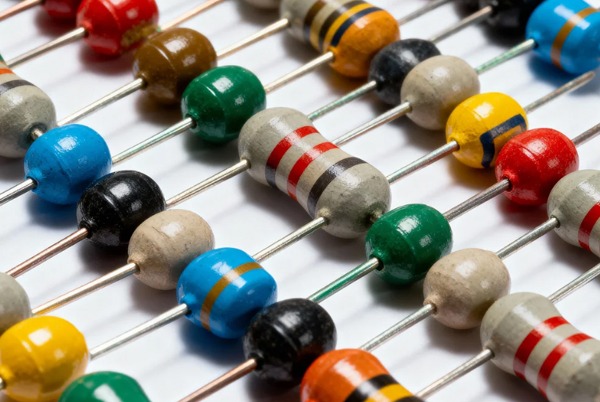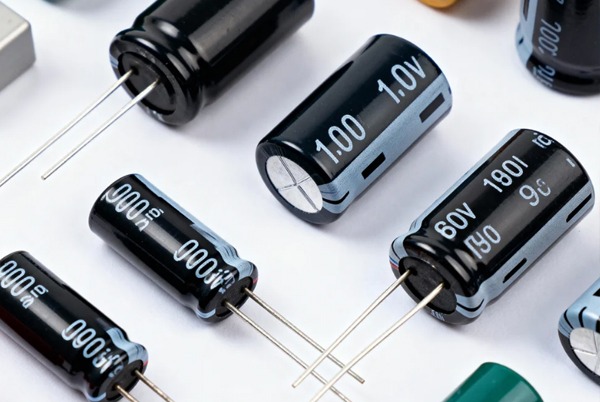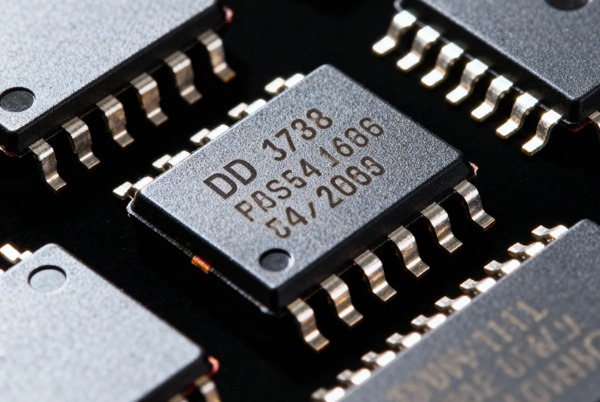Table of Contents
Basic Concepts and Core Differences of Electronic Components
Electronic components are fundamental units with independent functions that form electronic circuits, serving as the core elements of electronic equipment and small machinery instruments. They can be divided into two main categories: electronic components and electronic devices, which differ fundamentally:
- Electronic Components: Products whose molecular composition remains unchanged during manufacturing, such as resistors, capacitors, and inductors.
- Electronic Devices: Products whose molecular structure is altered during manufacturing, such as transistors and integrated circuits.
Systematic Classification of Electronic Components
Classification by Function and Structure
1. Passive Components
Passive components are basic elements that do not possess functions like amplification, control, or electron generation in circuits. They are only used for coupling, regulation, compensation, and protection:
| Component Type | Main Functions | Circuit Symbol | Typical Applications |
|---|---|---|---|
| Resistor | Current limiting, voltage division, impedance matching | R | Current limitation in all circuits |
| Capacitor | Charge storage, filtering, coupling | C | Power supply filtering, signal coupling |
| Inductor | Energy storage, high-frequency signal suppression | L | LC oscillator circuits, filtering |
| Transformer | AC voltage transformation | T | Power adapters, voltage conversion |
2. Active Devices
Active devices possess functions like amplification, control, and electron generation in circuits:
| Device Type | Main Functions | Circuit Symbol | Typical Applications |
|---|---|---|---|
| Diode | Rectification, switching, and current limiting | D | Power rectification, signal detection |
| Transistor | Amplification, switching control | Q | Signal amplification, power control |
| Integrated Circuit | Complex function integration | U or IC | Microprocessors, memory |
| Optoelectronic Devices | Photoelectric conversion | LED, etc. | Displays, optical communication |
Classification by Application Grade
Different application scenarios have vastly different requirements for electronic components, particularly semiconductors, which can be classified by “operating environment” as:
- Commercial Grade: 0-70°C operating temperature, consumer electronics
- Industrial Grade: -40 to 85°C operating temperature, industrial control equipment
- Automotive Grade: -40 to 125°C operating temperature, automotive electronic systems
- Military Grade: -55 to 125°C operating temperature, military and aerospace applications
- Space Grade: Extreme temperature range, ultra-high reliability, satellites, spacecraft
Classification by Quality Certification
- ISO Quality System Certification: Such as ISO 9001, indicating internationally recognized production control processes
- Industry-Specific Certifications: Such as IATF 16949 for the automotive industry, meeting stringent automotive electronic standards
- Professional Field Certifications: Such as China’s CQC certification, US UL and CUL certifications, German VDE and TUV certifications

Detailed Functions of Common Electronic Components
Basic Circuit Components
Resistor: Mainly functions for current shunting, limiting, voltage division, and biasing in circuits, denoted by “R” plus a number
Capacitor: Consists of two metal films close together, separated by insulating material, primarily characterized by blocking DC while passing AC
Inductor: Energy storage element that converts electrical energy to magnetic field energy, often works with capacitors to form LC filters, LC oscillators
Semiconductor Devices
Diode: Features unidirectional conductivity, mainly used in rectifier circuits, detection circuits, and voltage regulator circuits
Transistor: Has three pins, provides current amplification, is used for switch control, and signal amplification
Integrated Circuit: Formed by integrating transistors, resistors, capacitors, and other elements on a silicon substrate using special processes, creating functional devices
Other Important Components
Sensor: A Detection device that converts measured information into an electrical signal output, classified into ten major categories by sensing function: thermal, photosensitive, gas-sensitive, force-sensitive, etc.
Relay: An Electrical control device that uses a small current to control a large current operation, functioning as an “automatic switch.”
Oscillator: An Electronic component used to generate repetitive electronic signals (usually sine or square waves), converts DC to AC signals of a specific frequency
Electronic Component Selection and Reliability
Component “reliability” consists of two parts:
- Inherent Reliability: Derived from the manufacturer’s design, processes, raw materials, etc.
- Application Reliability: Depends on the user’s selection, procurement, ESD protection, and soldering screening processes
According to extensive failure analysis data, approximately 50% of failures originate from inherent defects, while another 50% result from improper usage. This means even when using high-grade components, problems can occur if usage processes are non-standardized.

Frequently Asked Questions
1. What is the fundamental difference between passive components and active devices?
Passive components can operate without external power and can only attenuate or store signals, without amplifying or controlling them. Active devices require external power to perform their basic functions and can amplify signals or control current flow.
2. How to select the appropriate electronic component quality grade for a project?
Selection depends on application environment: commercial products choose commercial grade; industrial environments require industrial grade; automotive electronics must use automotive grade; military and aerospace applications need corresponding military or space grade components.
3. What are the advantages and disadvantages of integrated circuits versus discrete components?
Integrated circuits offer high integration, small size, high reliability, and consistent performance, but have complex design and poor flexibility. Discrete components provide design flexibility, low cost, and strong power handling capability, but result in a larger system size and relatively lower reliability.
4. What is component derating design, and why is it important?
Derating design involves operating components at stress levels below their maximum rated values, such as using resistors at no more than 60% of their rated power. This significantly improves system reliability and component lifespan, particularly in harsh environments.
5. How to establish an effective component management and traceability system?
Establish a comprehensive management system covering component selection, procurement, acceptance, storage, distribution, and usage, recording batch numbers, production dates, supplier information, etc., to enable quick tracing and isolation when problems occur.
